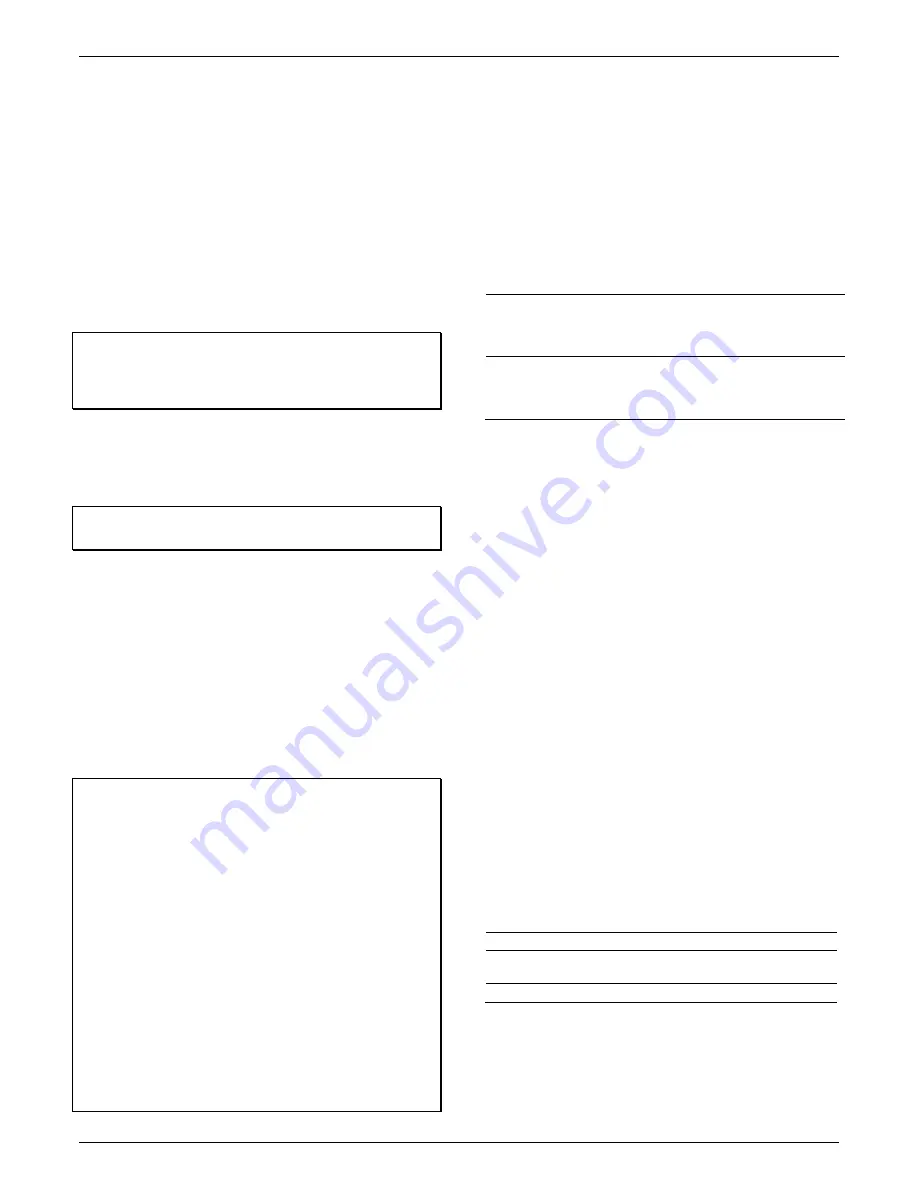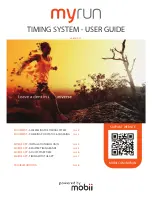
HOBO Pendant Event Data Logger (UA-003) Manual
1-800-LOGGERS 3
www.onsetcomp.com
these and attach the HOBO Pendant Event/Temp logger
instead.
Be careful not to touch the logger’s input wires together when
connecting or disconnecting the logger while it is logging, as
this will record a false event.
Triggered Start
This logger can be configured to start at your command, using
the magnet in the coupler to trigger a start.
1. Use HOBOware to launch the logger with Using Coupler
selected. Remove the logger from the coupler.
2. Bring the logger and an empty coupler or strong magnet to
the deployment location.
Important:
Any magnet can trigger a start. This can be helpful,
but it can also cause a premature start. Keep the logger away
from strong magnetic fields until you are ready to begin
logging.
3. When you are ready for the logger to start logging (for
example, after connecting the logger to an external device
such as a rain gauge), insert the logger into the empty
coupler (or place it next to a strong magnet) and remove it
after three seconds.
Important:
The logger will not launch if the base station is in
the coupler.
4. Verify that the logger’s light is blinking at least every four
seconds.
Event Logging
The external event channel records the times of transitions
from an open contact to a closed contact. The logger checks
continuously for transitions. When a transition occurs, it is
recorded as an event with a resolution of one second.
The external event channel has a built-in lockout time of 500
milliseconds. The lockout time serves to debounce mechanical
switches. To guarantee event capture, the pulse must have a
minimum duration of 1 millisecond.
Important:
If the logger is configured to log events only (no
temperature or battery logging), there may be a delay of up to
an hour before logging begins or when relaunching. Keep this
delay in mind for deployment purposes. Deploy the logger or
relaunch it at a time when you will not need any data for an
hour.
In addition, if at least one channel is enabled for logging (either
temperature or battery) and you are relaunching the logger
with the HOBO Waterproof Shuttle, the logger will use the
logging interval to determine when to relaunch. For example,
let’s say the logging interval was set to 3 hours and only the
battery channel was selected for logging. When the logger is
read out and relaunched with the shuttle, logging—including
event logging—will not begin for three hours (the previously
selected logging interval). If you want to log temperature data,
it is recommended that you use a shorter logging interval to
minimize the delay when relaunching with a logger. It is not
necessary to log battery data; it is recommended that you
disable that channel.
Like other U-Series loggers, this logger stores internal events
that are unrelated to the external event inputs. Internal events
are stored when the coupler is attached or detached, when the
battery drops below approximately 2.7V, when the battery rises
above 2.8V, when a host computer is connected, and when the
logger is stopped by a command from the host software.
Operation
A light (LED) on the front of the logger confirms logger
operation. The following table explains when the light blinks
during logger operation.
When: The
light:
The logger is logging
Blinks once every one to four seconds
(the shorter the logging interval, the
faster the light blinks); blinks when
logging a sample
The logger is awaiting a start
because it was configured to
start logging At Interval, On
Date/Time, or Using Coupler
Blinks once every eight seconds until
logging begins
Data Storage
The data logger has 64,000 bytes of nonvolatile data storage.
Data storage requirements per event are a function of enabled
channels and logging interval. When events are three to 12
days apart, 32 bits are required to record a single event (16,000
events). When events are less than 16 seconds apart, only 22
bits are required to record a single event (23,000 events). In
most cases, 25,000 to 30,000 data points (including events,
temperature, and/or battery measurements) can be logged. For
most rain bucket applications, battery life, not memory
capacity, will be the factor that limits deployment duration.
Protecting the Logger
Do not store the logger in the coupler. Remove the logger from
the coupler when you are not using it. When the logger is in the
coupler or near a magnet, it consumes more power and will
drain the battery prematurely.
Keep the logger away from magnets. Being near a magnet can
cause false coupler events to be logged. It can also launch the
logger prematurely if it was waiting for a trigger start.
If the logger is used in a humid location, periodically inspect the
desiccant and dry it if it is not bright blue. To dry the desiccant,
remove the desiccant pack and leave the pack in a warm, dry
location until the bright blue color is restored. (Refer to the
Battery
section for instructions on removing and replacing the
logger cap.)
Temperature Range
Desiccant Maintenance Schedule
Less than 30°C (86°F)
Approximately once per year
30° to 40°C (86° to
104°F)
Approximately every six months
Over 40°C (104°F)
Approximately every three months
Note! Static electricity may cause the logger to stop logging.
To avoid electrostatic discharge, transport the logger in an anti-
static bag, and ground yourself by touching an unpainted metal
surface before handling the logger. For more information,
search for “static discharge” on www.onsetcomp.com.
Shop for Data Logging products online at:
www.
DataLoggerStore
.ca
1.800.561.8187




















